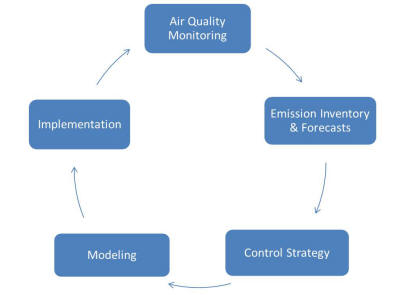 |
|
||||||||
 |
|
|
|
|
|
||||
|
|
|
|
|
||||||
|
|
|
||||||||
Air Quality Planning
Although the federal Clean Air Act has significantly improved our nationís air quality, many areas still have serious air quality problems. Ozone, the main constituent of smog, is the most serious and widespread air pollution problem in the country. In the United States, 100 million people live in areas that do not meet the federal air quality standards for ozone.
Ventura County, with a population of over 750 thousand people, is one of the areas that has a pressing ozone problem. Over the last ten years, the count averaged about 40 days per year over the federal one-hour ozone standard and 119 days over the more stringent California one-hour standard. Yet, both the number of days per year over the federal and state standards and the average ozone concentrations are declining countywide, largely as a result of regulator programs implemented at the local, statewide, and national levels.
As part of its mission to provide clean, healthful air quality to local residents and visitors to Ventura County, the Ventura County Air Pollution Control District has prepared and implemented a number of Air Quality Management Plans since 1979 in an effort to identify needed strategies to clean our air. As can be seen from the following flow chart, the air quality planning process involves most of the programs at the District: air quality monitoring, emissions estimation and forecasting, control measure development, modeling, rule development, rule implementation (permit processing), and regulatory compliance.
Air Quality Planning Flow Chart
Air Quality Management Plans
|
|
|
All text and images © Copyright, 2006 by Ventura County Air Pollution Control District Site design by VCAPCD Information Systems Division E-mail Webmaster - Privacy Policy - Cookie Policy |
|
